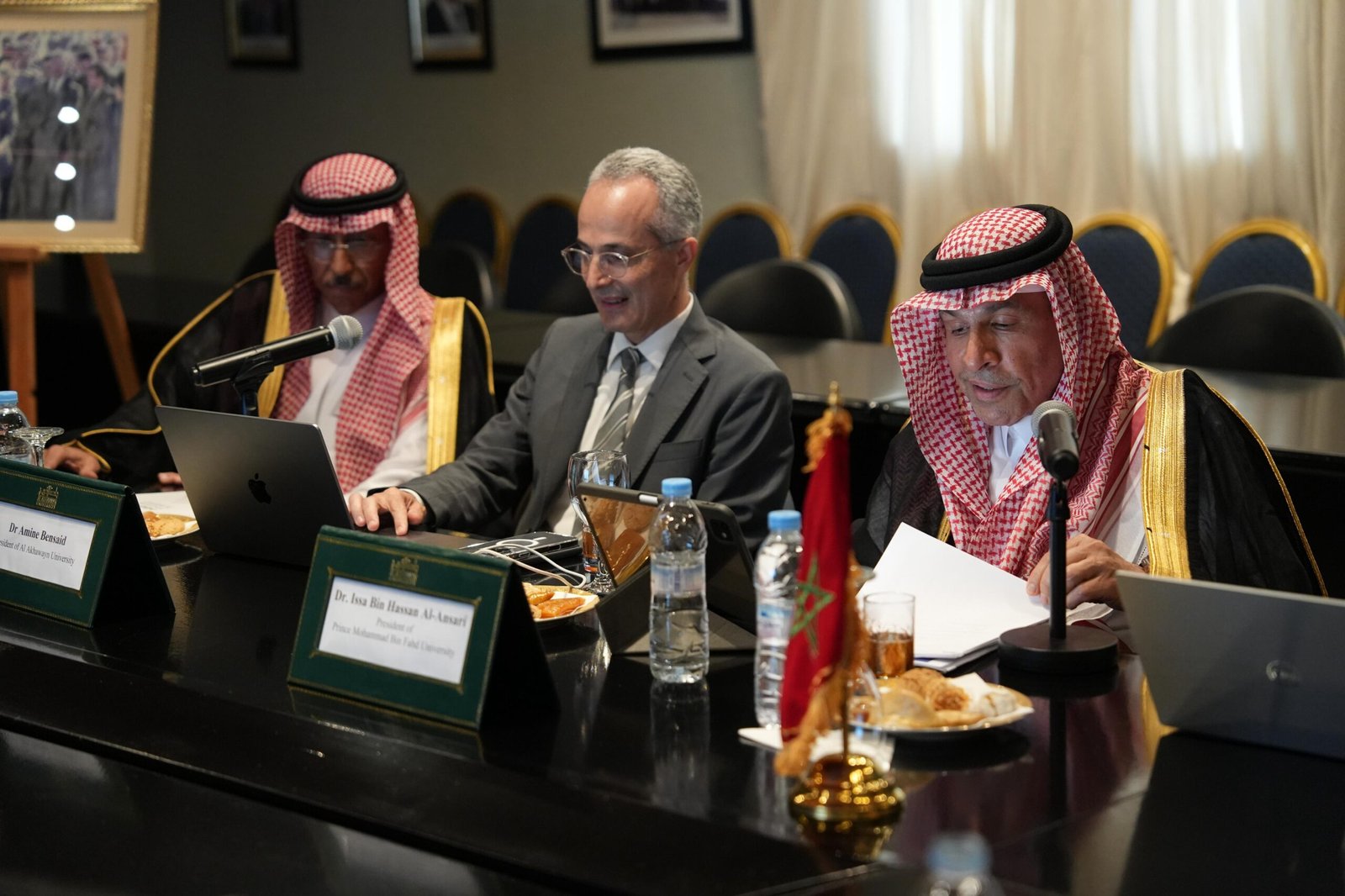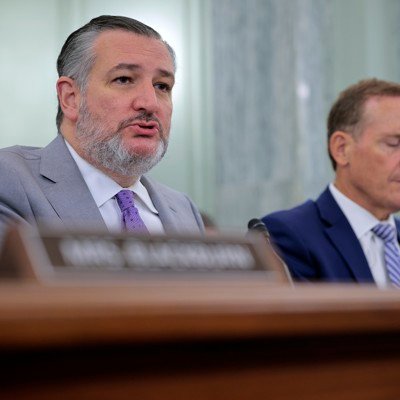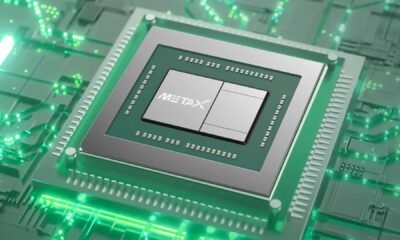AI Research
Urban India turns to Artificial Intelligence to manage civic woes | Latest News India

As India is poised to be the third-largest global economy, its cities, too, have undergone a steady makeover from their colonial aesthetics to a more modern avatar dotted with taller buildings, metro rails, and flyovers. However, one thing that has remained from the bygone era is the occasional appearance of stray cattle in the hustle and bustle of busy streets, and slowing down traffic movement. Worse, they cause deadly accidents.
While the problem is ancient, the city administration in Surat has deployed a modern solution of artificial intelligence (AI) to counter this menace.
The civic body uses an AI algorithm developed by National Institute of Technology (NIT) Surat to analyse the live video feed from cameras installed at major junctions in the city to detect stray cattle, said Jigan Patel, director of information technology at Surat Municipal Corporation (SMC).
“The alert is not issued when cattle are accompanied by a herder. But, whenever stray cattle are spotted, an alert is generated with a timestamp and location,” he said, adding that control room officials inform the on-ground dedicated municipal staff for catching stray cattle, who impound them.
Based on the directives of the Gujarat high court, SMC, in 2023, rolled out a free RFID tagging programme containing details of their owners for bovines before implementing a strict anti-stray cattle policy since November that year. The fine amounts increase progressively for repeat offenders, as part of a state law passed in the assembly in 2022 following the same high court directions.
So far, 1,545 incidents of stray cattle have been detected, with ₹18.4 lakh recovered as penalties.
The same system is used by the city to detect incidents of littering and spitting. SMC commissioner Shalini Agarwal said that this technology-enabled monitoring has helped the city to achieve a high ranking in the central government’s Swachh Survekshan programme.
Patel explained that offenders of spitting are often identified using their vehicle numbers detected through the ANPR (automatic number plate recognition) systems. He said so far, 12,120 challans for spitting and 35,382 incidents of garbage throwing were detected through this system, leading to the collection of ₹7.19 lakh and ₹18.4 lakh as penalties, respectively.
Just like the age-old problem of stray cattle and encroachments, another issue that plagues Indian cities is that of unaccounted loss of water or non-revenue water (NRW), primarily due to leaks in the water supply network. While globally, NRW stands at 30%, in India, many Indian cities report NRW as high as 50%. The Economic Survey of Delhi 2023-24 found that about 58% of the water produced by the Delhi Jal Board is classified as NRW.
However, in Pune, over the last two years, several AI-enabled digital twin solutions have been applied to improve the situation.
An official with a major industrial conglomerate tasked with the revamp of the city’s water supply said, as part of a trial, the company’s solution was deployed in the Panchawati zone with a piped water network of around 10km. “By using the system, we could find leakages in our network and illegal users, which have now brought our NRW to 25% currently. We are aiming for further efficiency and bringing it down to 20%,” the official said on anonymity. Based on the success in Panchawati, the system will be deployed in 15 other zones.
The digital twin works on data from sensors in the water supply network to create a virtual replication of the water supply network. The AI/ML models process the live data of the sensors, pumping stations, and analyse the household water consumption information to detect leakages and unauthorised usage.
The Pune Municipal Corporation (PMC) is also working on expanding an AI-based system to detect unregistered or illegal constructions by using a GIS (Geographic Information Systems)-based system and comparing it with property tax data, an official said.
Another city in Maharashtra, Chhatrapati Sambhajinagar (formerly Aurangabad), has developed an AI-based chatbot –– which works in Marathi and English –– for its official website to cater to queries raised by residents.
Faiz Ali, project manager at Aurangabad Smart City, said the chatbot, unlike FAQ (Frequently Asked Questions) based bots, is based on various e-governance modules covering the issuance of birth and death certificates, department-related grievance redressal systems, and making property tax and water bill payment systems user-friendly. He said any complaint addressed to the chatbot or the city’s 155304 helpline is automatically sent an SMS acknowledgement stating a timeline. On the backend, the complaint is tagged to the line department official.
If the complaint is left unaddressed within two weeks, then the AI-based system flags it for the city commissioner, who reviews the unresolved complaints regularly, Ali said.
In Madhya Pradesh’s Jabalpur, the city administration is using a 3D model system of the entire city area spanning 264 sq km, which is then compared with new imagery gathered through drone-based aerial surveys every five years. “Using the system, we can get accurate information on the expansion of buildings. In the latest revision ending March 2024, we found that there were additional structures in more than 20% of the properties,” an official aware of the details said on anonymity, stating this led to an additional property tax collection of ₹30 crore.
While these cities have taken a lead in leveraging AI for different use cases, the Centre’s Smart City Mission and Safe City project (through the Nirbhaya fund) has mainstreamed the use of AI-based integrated traffic management systems (ITMS) and surveillance systems. The ITMS systems have AI-based applications to detect red light violations, helmetless usage of two-wheelers or triple riding, wrong-way driving, among others, and identify violators through ANPR. These systems have been incorporated by all tier 1 cities and many tier 2 cities.
Similarly, the Safe City project has cameras equipped with facial recognition technology to flag the presence of wanted suspects. New Delhi is soon expected to have an additional 3,500 AI-enabled cameras, along with 200 gunshot detection systems, from October 1 under the same project.
While the number of cameras installed increases, their maintenance and usage have come under scrutiny, even during the recent tragic incident involving the death of a Delhi University student, Sneha Debnath. It was widely reported that a series of cameras in and around the Signature Bridge was non-functional.
In the week leading up to the incident, HT reported how Delhi’s Public Works Department (PWD) had found many of the existing cameras defunct or in need of urgent repair, while some of the previously acquired cameras were yet to be installed.
Debolina Kundu, acting director at National Institute of Urban Affairs (NIUA) –– a think-tank of the Ministry of Housing and Urban Affairs (MoHUA), said AI and ML are vital for predictive analytics that can not only improve service delivery, but also manage disaster risks.
In that line, she said under the CITIIS (city investments to innovate, integrate and sustain) 2.0 programme, 21 city-level climate observatories are being set up where real-time pollution and weather data among other datasets will be used along with historical weather data to predict localised weather forecasts and disaster reduction measures. “Integration of different layers of live and historical data is important for this,” she said. Smart city command centres also have a large amount of data that can be further cultivated to gather actionable insights, Kundu added.
AI Research
AUI, PMU Sign Agreement to Establish AI Research Chair in Morocco

Rabat — Al Akhawayn University in Ifrane (AUI) and Prince Mohammed Bin Fahd University (PMU) announced an agreement establishing the Prince Mohammed Bin Fahd bin Abdulaziz Chair for Artificial Intelligence Applications.
A statement from AUI said Amine Bensaid, President of AUI, signed the agreement with his PMU counterpart Issa Al Ansari.
The Chair, established within AUI, will conduct applied research in AI to develop solutions that address societal needs and promote innovation to support Moroccan talents in their fields.
The agreement reflects a shared commitment to strengthen cooperation between the two institutions, with a focus on AI to contribute to the socio-economic development of both Morocco and Saudi Arabia, the statement added.
The initiative also seeks to help Morocco and Saudi Arabia boost their national priorities through AI as a key tool in advancing academic excellence.
Bensaid commented on the agreement, saying that the partnership will strengthen Al Akhawayn’s mission to “combine academic excellence with technological innovation.”
It will also help to master students’ skills in AI in order to serve humanity and protect citizens from risk.
“By hosting this initiative, we also affirm the role of Al Akhawayn and Morocco as pioneering actors in this field in Africa and in the region.”
For his part, Al Ansari also expressed satisfaction with the new agreement, stating that the pact is in line with PU’s efforts to serve Saudi Arabia’s Vision 2030.
This vision “places artificial intelligence at the heart of economic and social transformation,” he affirmed.
He also expressed his university’s commitment to working with Al Akhawayn University to help address tomorrow’s challenges and train the new generation of talents that are capable of shaping the future.
Al Akhawayn has been reiterating its commitment to continue to cooperate with other institutions in order to boost research as well as ethical AI use.
In April, AUI signed an agreement with the American University of Sharjah to promote collaboration in research and teaching, as well as to empower Moroccan and Emirati students and citizens to engage with AI tools while staying rooted in their cultural identity.
This is in line with Morocco’s ambition to enhance AI use in its own education sector.
In January, Secretary General of Education Younes Shimi outlined Morocco’s ambition and advocacy for integrating AI into education.
He also called for making this technology effective, adaptable, and accessible for the specific needs of Moroccans and for the rest of the Arab world.
AI Research
How NAU professors are using AI in their research – The NAU Review

Generative AI is in classrooms already. Can educators use this tool to enhance learning among their students instead of undercutting assignments?
Yes, said Priyanka Parekh, an assistant research professor in the Center for STEM Teaching and Learning at NAU. With a grant from NAU’s Transformation through Artificial Intelligence in Learning (TRAIL) program, Parekh is investigating how undergraduate students use GenAI as learning partners—building on what they learn in the classroom to maximize their understanding of STEM topics. It’s an important question as students make increasing use of these tools with or without their professors’ knowledge.
“As GenAI becomes an integral part of everyday life, this project contributes to building critical AI literacy skills that enable individuals to question, critique and ethically utilize AI tools in and beyond the school setting,” Parekh said.
That is the foundation of the TRAIL program, which is in its second year of offering grants to professors to explore how to use GenAI in their work. Fourteen professors received grants to implement GenAI in their classrooms this year. Now in its second year, the Office of the Provost partnered with the Office of the Vice President for Research to offer grants to professors in five different colleges to study the use of GenAI tools in research.
The recipients are:
- Chris Johnson, School of Communication, Integrating AI-Enhanced Creative Workflows into Art, Design, Visual Communication, and Animation Education
- Priyanka Parekh, Center for Science Teaching and Learning, Understanding Learner Interactions with Generative AI as Distributed Cognition
- Marco Gerosa, School of Informatics, Computing, and Cyber Systems, To what extent can AI replace human subjects in software engineering research?
- Emily Schneider, Criminology and Criminal Justice, Israeli-Palestinian Peacebuilding through Artificial Intelligence
- Delaney La Rosa, College of Nursing, Enhancing Research Proficiency in Higher Education: Analyzing the Impact of Afforai on Student Literature Review and Information Synthesis
Exploring how GenAI shapes students as learners
Parekh’s goals in her research are to understand how students engage with GenAI in real academic tasks and what this learning process looks like; to advance AI literacy, particularly among first-generation, rural and underrepresented learners; help faculty become more comfortable with AI; and provide evidence-based recommendations for integrating GenAI equitably in STEM education.
It’s a big ask, but she’s excited to see how the study shakes out and how students interact with the tools in an educational improvement. She anticipates her study will have broader applications as well; employees in industries like healthcare, engineering and finance are using AI, and her work may help implement more equitable GenAI use across a variety of industries.
“Understanding how learners interact with GenAI to solve problems, revise ideas or evaluate information can inform AI-enhanced workplace training, job simulations and continuing education,” she said.
Using AI as a collaborator, not a shortcut
Johnson, a professor of visual communication in the School of Communication, isn’t looking for AI to create art, but he thinks it can be an important tool in the creation process—one that helps human creators create even better art. His project will include:
- Building a set of classroom-ready workflows that combine different industry tools like After Effects, Procreate Dreams and Blender with AI assistants for tasks such as storyboarding, ideation, cleanup, accessibility support
- Running guided stories to compare baseline pipelines to AI-assisted pipelines, looking at time saved and quality
- Creating open teaching modules that other instructors can adopt
In addition to creating usable, adaptable curriculum that teaches students to use AI to enhance their workflow—without replacing their work—and to improve accessibility standards, Johnson said this study will produce clear before and after case studies that show where AI can help and where it can’t.
“AI is changing creative industries, but the real skill isn’t pressing a button—it’s knowing how to direct, critique and refine AI as a collaborator,” Johnson said. “That’s what we’re teaching our students: how to keep authorship, ethics and creativity at the center.”
Johnson’s work also will take on the ethics of training and provenance that are a constant part of the conversation around using AI in art creation. His study will emphasize tools that respect artists’ rights and steer clear of imitating the styles of living artists without consent. He also will emphasize to students where AI fits into the work; it’s second in the process after they’ve initially created their work. It offers feedback; it doesn’t create the work.
Top photo: This is an image produced by ChatGPT illustrating Parekh’s research. I started with the prompt: “Can you make an image that has picture quality that shows a student with a reflection journal or interface showing their GenAI interaction and metacognitive responses (e.g., “Did this response help me?”)? It took a few rounds of changing the prompt, including telling AI twice to not put three hands into the image, to get to an image that reflects Parekh’s research and adheres to The NAU Review’s standards.
Heidi Toth | NAU Communications
(928) 523-8737 | heidi.toth@nau.edu
AI Research
Cruz unveils new AI framework as blueprint for future legislation

Ensuring American artificial intelligence tools become the global operating standard is the central mission of Texas Republican Sen. Ted Cruz’s new AI Legislative Framework, released on Wednesday alongside his long-awaited SANDBOX ACT.
The AI sandbox bill, which would create a federal AI testing setup within the White House’s Office of Science and Technology Policy, serves as part of the first pillar of Cruz’s new strategy that proposes a broad plan for Congressional legislative priorities surrounding AI.
The strategy is centered around five pillars: unleashing American innovation and long-term growth; protecting free speech in the AI age; preventing a patchwork of burdensome AI regulation; stopping nefarious use of AI against Americans; and defending human value and dignity.
“While this list is not exhaustive, it provides a starting point for discussion with both my colleagues and the administration on legislation that ensures the United States wins the AI race and benefits from this transformative technology,” Cruz said during a Wednesday Senate Commerce hearing.
Within each of these pillars, the strategy also lays out specific action items, such as creating the federal AI regulatory sandbox, protecting Americans against digital scams and fraud, reinvigorating bioethical considerations in federal policy and clarifying federal standards to prevent burdensome state AI regulations. Together, these inform the light-touch AI regulation that Cruz and the Trump administration have supported across the federal policy landscape and seeks to keep industry partners at the center of major regulatory decisions.
Cruz’s SANDBOX Act aims to exemplify that approach, offering exemption waivers for participating AI softwares from existing rules and restrictions that could impede the work done in the sandbox.
Cruz noted that Congress would be tasked with collecting regular reports on how often these rules and restrictions were modified to better understand the future policy needs of American AI operators.
“The SANDBOX Act is the first step,” Cruz said in the press release. “It embraces our nation’s entrepreneurial spirit and gives AI developers the room to create while still mitigating any health or consumer risks. The AI framework and SANDBOX Act ensure AI is defined by American values of defending human dignity, protecting free speech, and encouraging innovation.”
-

 Business2 weeks ago
Business2 weeks agoThe Guardian view on Trump and the Fed: independence is no substitute for accountability | Editorial
-
Tools & Platforms4 weeks ago
Building Trust in Military AI Starts with Opening the Black Box – War on the Rocks
-

 Ethics & Policy1 month ago
Ethics & Policy1 month agoSDAIA Supports Saudi Arabia’s Leadership in Shaping Global AI Ethics, Policy, and Research – وكالة الأنباء السعودية
-

 Events & Conferences4 months ago
Events & Conferences4 months agoJourney to 1000 models: Scaling Instagram’s recommendation system
-

 Jobs & Careers2 months ago
Jobs & Careers2 months agoMumbai-based Perplexity Alternative Has 60k+ Users Without Funding
-

 Education2 months ago
Education2 months agoVEX Robotics launches AI-powered classroom robotics system
-

 Podcasts & Talks2 months ago
Podcasts & Talks2 months agoHappy 4th of July! 🎆 Made with Veo 3 in Gemini
-

 Education2 months ago
Education2 months agoMacron says UK and France have duty to tackle illegal migration ‘with humanity, solidarity and firmness’ – UK politics live | Politics
-

 Funding & Business2 months ago
Funding & Business2 months agoKayak and Expedia race to build AI travel agents that turn social posts into itineraries
-

 Podcasts & Talks2 months ago
Podcasts & Talks2 months agoOpenAI 🤝 @teamganassi





















